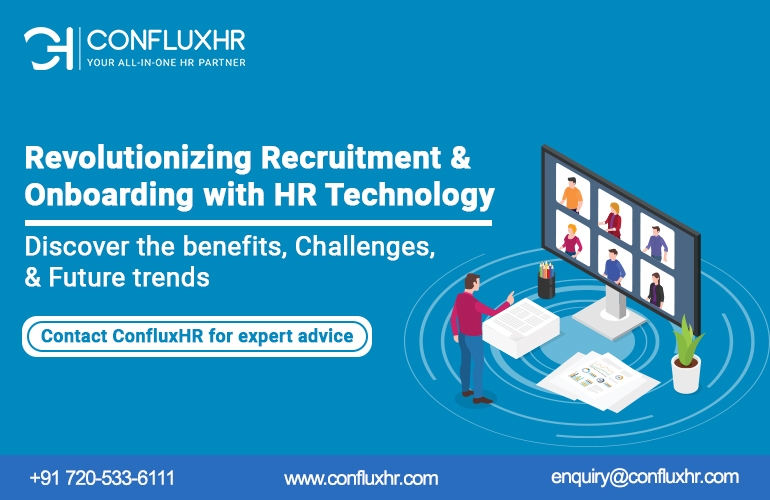In today’s competitive job market, companies need to stay ahead of the curve when it comes to attracting and retaining talent. One of the ways that businesses are doing this is by leveraging HR technology to streamline their recruitment and onboarding processes.
In this blog post, we’ll explore the benefits of HR technology, the types of tools available, real-life success stories, challenges and solutions, and what the future of HR technology might look like.
Benefits of HR Technology:
Using HR technology can offer several benefits for companies. For instance, it can help automate the recruitment process, reduce time-to-hire, improve the candidate experience, and enable companies to reach a wider pool of candidates.
Additionally, using technology in the onboarding process can help reduce paperwork, ensure a smoother transition for new hires, and enable HR professionals to focus on more strategic tasks.
Types of HR Technology:
There are several types of HR technology that companies can use in the recruitment and onboarding process. For example, applicant tracking systems (ATS) can help manage job postings, applications, and candidate communication.
ConfluxHR enables remote interviews, saving time and travel expenses. Virtual onboarding tools can provide an engaging and interactive experience for new hires, introducing them to the company culture and policies.
Success Stories:
Many companies have successfully implemented HR technology to improve their recruitment and onboarding processes. For example, one large retail chain reduced its time-to-hire from 60 days to 10 days by using an ATS.
Another global tech company implemented virtual onboarding, enabling new hires to complete paperwork and watch training videos posted on the notice board online before their first day.
These success stories demonstrate how HR technology can positively impact businesses of all sizes.
Challenges and Solutions:
While there are many benefits to using HR technology, there may also be challenges that companies need to address. For example, there may be concerns about the cost of implementing new technology. Additionally, some employees may be resistant to change.
However, by being transparent and communicating the benefits of HR technology, companies can overcome these challenges and create a more efficient and effective recruitment and onboarding process.
Future of HR Technology:
As technology continues to advance, the future of HR technology looks promising. For example, innovative technologies could be used to automate more aspects of the recruitment process, such as resume screening and candidate matching.
By embracing these emerging technologies, companies can stay ahead of the competition and attract and retain top talent.
Conclusion:
In conclusion, HR technology is transforming the way companies attract and retain talent. By leveraging tools such as applicant tracking systems, video interviewing platforms, and virtual onboarding tools, companies can improve their recruitment and onboarding processes, save time and costs, and create a better candidate and employee experience.
As technology continues to evolve, it’s important for companies to stay up-to-date with the latest trends and tools. We hope this blog post has provided you with some actionable insights and ideas for how to leverage HR technology in your own organization.
If you’re interested in learning more about how HR technology can benefit your organization, reach out to us at ConfluxHR today.
Our team of HR professionals can help you navigate the world of HR technology and implement the tools that will work best for your business.


